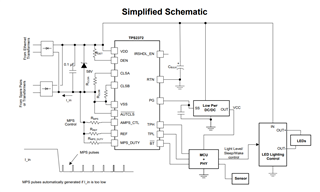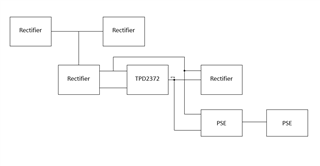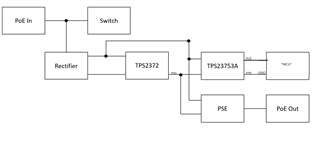Other Parts Discussed in Thread: TPS2372, , TPS23753, PMP11271
Hello,
I would like to use the TPS2372 as the PD and TPS23753A as the DCDC Regulator as we already have a tested design for that DCDC Regulator.
I need the extra power for a PSE that will be included in the design.
Is it possible to do this, if that is the case how should i configure the TPS23753A? In other words, is it possible to Disable to PD part of the regulator and only run it as a Regulator
Thanks for the Help!
BR Martin






